Surgical Oncologic Activity Before, During and after Pandemic COVID-19 Period in a French Cancer Center
Gilles Houvenaeghel1,*, Julien Barrou1, Laura Sabiani2, Guillaume Blache2, Monique Cohen2, Géraldine Pignot2, Marie Bannier2, Camille Jauffret2, Sandrine Rua2, Max Buttarelli2, Aurore Van Troy2, Marion Faucher3, Eric Lambaudie1, Jochen Walz2
1Department of surgical oncology, Paoli Calmettes Institute and CRCM, CNRS, INSERM, Aix Marseille Université., 13009 Marseille, France
2Department of surgical oncology, Paoli Calmettes Institute, 13009 Marseille, France
3Department of Anesthesiology and Critical Care, Paoli Calmettes Institute, 13009 Marseille, France
*Corresponding Author: Professor Gilles Houvenaeghel, Department of surgical oncology, Paoli Calmettes Institute and CRCM, CNRS, INSERM, Aix Marseille Université., 232 Bd de Sainte Marguerite, 13009 Marseille, France
Received: 28 September 2020; Accepted: 08 October 2020; Published: 20 October 2020
Article Information
Citation: Gilles Houvenaeghe, Julien Barrou, Laura Sabiani, Guillaume Blache, Monique Cohen, Géraldine Pignot, Marie Bannier, Camille Jauffret, Sandrine Rua, Max Buttarelli, Aurore Van Troy, Marion Faucher, Eric Lambaudie, Jochen Walz. Surgical Oncologic Activity Before, During and after Pandemic COVID-19 Period in a French Cancer Center. Journal of Surgery and Research 3 (2020): 370-381.
View / Download Pdf Share at FacebookAbstract
Aim: During pandemic COVID-19 period it was recommended to postpone all non-emergency surgeries. The objective of this study was to evaluate the reduction of oncological surgery during the COVID-19 pandemic period compared to 2019 and the reduction according to different specialities.
Methods: Surgical activity of “Department of surgical oncology 2” from January 2020 to June 2020 was analysed. Comparisons of surgical activity were performed between each month of 2020 and between each month of 2020 and 2019. Each domain of activity, breast surgery, breast reconstruction, gynecology and urology were analysed. Ambulatory surgery activity and robotic surgery were also analysed.
Results: From January to June 2020, 1835 surgeries were performed in comparison with 2029 surgeries in 2019, with a decrease of 9.56% due to an important decrease during months of April and May. A major decrease was observed for breast surgery (16.47%) and breast reconstruction (33.22%) during pandemic peak. In contrast, gynecologic and urologic activities had not decreased during this 6 months period due to an increase of activity (37.04%) in June 2020. With a 10.3% total urologic activity increase, there was no significant variation. Ambulatory hospitalizations rate was lower in 2020, 38.15% compared to 41.4% in 2019.
Conclusion: The major activity decrease in breast and reconstructive surgery allowed a smaller decrease of others speciality surgeries in this period with some limitations of resources. It will be interesting to evaluate breast cancer surgical activity in the next months in order to determine if a compensatory activity increase will be observed.
Keywords
Surgical oncology; COVID-19; Breast; Gynecology; Urology; Reconstruction
Surgical oncology articles; COVID-19 articles; Breast articles; Gynecology articles; Urology articles; Reconstruction articles
Article Details
1. Introduction
A great transmission of COVID-19 has been observed during pandemic period resulting in a large number of patients with severe disease requiring hospitalization in intensive care unit and a great number of deaths.
All non-emergency surgical activity has been avoided or postponed since March 17, 2020. Oncologic surgery should be considered as a relative emergency. However, the risks of a delayed surgery for newly diagnosed cancers should be balanced with the risks of exposure to the virus and the risks of complications due to surgery combined with COVID-19 infection, particularly for older patients [1]. Several guidelines and considerations were reported according to oncologic specialities [2-11].
The objective of this study was to evaluate the reduction of oncological surgery in adult in a Department of surgical oncology including breast, gynecologic and urologic activity during the COVID-19 pandemic period compared to 2019 and compared to January and February 2020, before the pandemic COVID-19 peak. The second objective was to evaluate the reduction of oncological surgery according to different specialities.
2. Material and Methods
Paoli Calmettes Institute is a cancer center in Marseille, France, which include medical oncology, surgical oncology, radiotherapy, hematology, radiology, endoscopy, nuclear medicine and pathology. Two Departments of surgical oncology are dedicated to digestive cancers for Department of surgical oncology 1 and breast, gynecologic, urologic cancers for Department of surgical oncology 2.
During COVID-19 pandemic, hospital remained free of patients with positive COVID-19. In our country, impact of COVID-19 pandemic began in March 2020 and decrease significantly in May 2020. Confinement in France began on March 17 and was lifted on May 11. Patients with positive RT-PCR COVID-19 were referred to Infectious Hospital Unit of Marseille.
Since 2020 April 01, a systematic detection was performed for all patients with indication of general anesthesia for surgery or endoscopy with detection of clinical symptoms seven days before anesthesia (fever, cough, anosmia, ageusia, headhache) and COVID-19 RT-PCR two or three days before anesthesia.
Surgical activity of “Department of surgical oncology 2” from January 2020 to June 2020 was analysed. Comparisons of surgical activity were performed between each month of 2020 and between each month 2020 and 2019. Each domain of activity, breast surgery, breast reconstruction, gynecology and urology were analysed. Ambulatory surgery activity and robotic surgery were also analysed.
3. Results
3.1 Total activity of department
From January to June 2020, 1835 surgeries were performed in comparison with 2029 surgeries during the same period in 2019, with a decrease of 9.56%. Variations between 2020 and 2019 were different for each month, between +12.03% to -39.61%. An important decrease was observed during months of April and May. These rates are reported in Figure 1 and Table 1.
|
2019 |
2020 |
Rate |
|
|
Breast |
917 |
766 |
(-16.47) |
|
Reconstruction |
292 |
195 |
(-33.22) |
|
Gynecology |
366 |
374 |
(+2.18) |
|
Urology |
454 |
500 |
(+10.13) |
|
Total |
2029 |
1835 |
(-9.56) |
Table 1: Overall surgical activity and according specialities in years 2019 and 2020.
3.2 Surgical activity according to speciality
In 2020 in comparison with 2019 we reported a decrease of 16.47% for breast surgery, 33.22% for breast reconstruction and an increase of 2.18% for gynecology, 10.13% for urology (Table 1, Figures 2, 3 and 4).
3.3 Surgical activity according to speciality and months
For breast surgery we observed a high decrease rate during April and May 2020 in comparison with the same months of year 2019, 48.4% and 41.9% respectively, and breast surgery activity remained lower in June 2020 in comparison with the first three months of 2020 and in comparison with June 2019 (-26/3%).
Breast surgery numbers in 2019 and 2020 according to months and activity rates between 2020 and 2019 were reported in Figure 2.
3.4 Immediate breast reconstruction
IBR) evolution is reported in Table 2 and Figure 5, with high decrease rates during months of March and May (61.5% and 60.0%, respectively). For the 6 months IBR decrease from 85 patients in 2019 to 74 patients in 2020 (12.94%). In June 2020, we observed a small increase of IBR rate compared to year 2019: 7.14%.
|
Reconstruction |
IBR |
|||||
|
2019 |
2020 |
% |
2019 |
2020 |
% |
|
|
January |
56 |
57 |
0,0179 |
18 |
17 |
-0,0556 |
|
February |
43 |
50 |
0,1628 |
14 |
17 |
0,2143 |
|
March |
62 |
28 |
-0,5484 |
13 |
5 |
-0,6154 |
|
April |
53 |
0 |
-1,0000 |
15 |
6 |
-0,6000 |
|
May |
43 |
17 |
-0,6047 |
11 |
14 |
0,2727 |
|
June |
35 |
43 |
0,2286 |
14 |
15 |
0,0714 |
Table 2: Delayed breast reconstruction and immediate breast reconstruction (IBR).
We observed a strong decrease of surgery for delayed breast reconstruction in March, April and May: 54.8, 100 and 60.5% respectively (Table 2).
3.5 Gynecology
We reported a small increase of total gynecologic activity (2.18%) with a decrease activity in April and May 2020 in comparison with 2019: -17.9% and -27.3% respectively. But a sharp rise in the rate of June 2020 gynecologic activity was reported: 37.04% ( Figure 3).
3.6 Urology
With a 10.3% total urologic activity increase, there was no significant variation during months of pandemic COVID-19.
3.7 Robotic surgery
Overall robotic surgery activity and according to specialities are reported in Table 3. Variations of robotic surgery activity during each month of 2020 compared to activity number of January 2020 show a decrease in activity in March and April (Figure 6). A decrease of robotic surgery was observed for breast surgery (71.9%: nipple sparing mastectomy and / or latissimus dorsi-flap reconstruction) and gynecologic surgery (27.0%). On the other hand, we reported a small increase of robotic urologic surgery (5.04%).
|
Robotic |
2019 |
2020 |
% |
|
Urology |
139 |
146 |
0,0504 |
|
Breast |
32 |
9 |
-0,7188 |
|
Gynecology |
37 |
27 |
-0,2703 |
|
Total |
208 |
182 |
-0,1250 |
Table 3: Robotic surgical activity.
3.8 Ambulatory hospitalization (Table 4)
With a 16.7% total ambulatory activity decrease (840 patients in 2019 and 700 in 2020), we reported a decrease of ambulatory hospitalization during months of March to May (–10.1 to -44.9%).
Ambulatory hospitalizations are reported in Table 4. Overall ambulatory hospitalization rate compared with total number of surgeries was 41.4% and rates remained stable in year 2019 from January to June (40.1 to 43.2). In 2020, this rate was lower (38.15%) and these rates were little different during the different months of the study (35.2 to 41.6%).
Table 4: Ambulatory hospitalization.
4. Discussion
During the period of study of 6 months we reported a decrease of surgical oncology activity of 9.56% (194 surgeries) corresponding to about 2 months of surgical activity of year 2019 with a mean of 102 surgeries per month. A temporary reduction of 30-60% of cases was recommended [5] as we reported during pandemic COVID-19 peak, April and May 2020. However, these decreases were different according to specialities.
For gynecology and urology, we observed an increase of activity during this period (+2.18% and +10.13%, respectively). The great decrease of activity during March and April for gynecologic activity (-17.9% and -27.3%, respectively) was compensated by a greater activity during January and February (+2.78% and +28.0%) and a large increase in June after pandemic COVID-19 peak (+37.04%): 30 surgeries in April and May 2020 less than the same months of year 2019, with 20 gynecologic surgeries more in June 2020 in comparison with June 2019. A delayed surgery for example on patients with endometrial cancer as we observed for months of March and April could be planned based on published data [12]. This increase in June corresponds to an organization to develop post-COVID-19 recovery plans [5] with adequate detection and protective measures without compromise safety of patients and healthcare workers [13].
For urologic activity we observed no important variations in 2020 in comparison with year 2019 for the different months of this period. A reduction of 2.5% and 3.5% was observed in March and April, significantly lower than the reported decrease of 31% in March 2020 in comparison with March 2019 for surgical oncologic urologic surgery in hospitals of Paris that were not specifically dedicated to surgical oncology and that had admitted a large number of positive COVID-19 patients [14]. Minimally invasive surgery (either laparoscopic or robotic) associated with enhanced recovery and reduced need of intensive care unit hospitalization was contributory, as we reported for urologic and gynecologic activity [15] and a smoke filtration device with filter which is smaller than diameter of COVID-19 was recommended to reduce the risk of exposure to COVID-19 for all workers in the operating room [16, 17].
A strong impact of pandemic COVID-19 was observed for breast cancer surgery and reconstruction.For breast cancer surgery a 16.47% decrease was reported for the entire period of 6 months (151 surgeries) with a major decrease during the last three months in comparison with year 2019: 75, 70 and 40 surgeries less than 2019 for the last three months with a total of 185 surgeries, corresponding to 1.2 months of 2019 activity. In contrast for gynecologic activity we don’t observed an activity increase in June in compensation of April and May lack activity [18]. This observation was in relation with several reasons, as reported by others [7, 19-22]: 1) patient’s with fair of COVID-19 infection don’t realized breast radiographic exams and consultations, 2) screening mammographic detection was stopped during pandemic COVID-19 period (the end of March, April and May) with a slow recovery of screening program, 3) after resuming the screening detection program, a delay of several weeks was necessary to perform biopsies and consultations with pathologic results and then surgery scheduling, 4) for patients with positive endocrine receptors and negative Her2 expression and Grade 1 or 2 breast cancers, neo-adjuvant endocrine therapy was proposed for 6 to 8 weeks before surgery, particularly for post-menopausal patient’s and older patient’s [19], 5) for patients with in-situ breast cancer, surgery was delayed, 6) for patients with cN1 axillary disease with positive nodal cytology or biopsy and breast ductal cancer grade 2-3 and/or triple negative or Her2 amplified, neo-adjuvant chemotherapy was indicated.
For immediate breast reconstruction, an overall decrease of 12.94% was observed (11 patients) with a major decrease during months of March and April. In May and June, IBR was realized after pandemic COVID-19 peak and particularly for patients with neo-adjuvant chemotherapy with delayed surgery from March-April to May-June.
A strong decrease of delayed breast reconstruction was observed in relation with guidelines [4], from March to May 2020 (158 surgeries in 2019 versus 45 in 2020 which represent 2.3 months of activity). In June, after pandemic COVID-19 peak a further increase of delayed breast reconstruction was initiated (+22.86%).
5. Conclusion
The major activity decrease in breast and reconstructive surgery allowed a smaller decrease of others speciality surgeries in this period with some limitations of resources and operative rooms. It will be interesting to evaluate breast cancer surgical activity in the next 4 to 6 months in order to determine if a compensatory activity increase will be observed. Except for urology, ambulatory hospitalization decrease was relatively in accordance with activity decrease of others specialities.
Conflict of Interest Statement
To the best of the authors' knowledge, they have no relevant financial relationships that could create a conflict of interest.
Disclosures
None.
Acknowledgments
None.
References
- COVID Surg Collaborative. Mortality and pulmonary complications in patients undergoing surgery with perioperative SARS-CoV-2 infection: an international cohort study. Lancet 396 (2020): 27-38.
- Mazzaferro V, Danelli P, Torzilli G, Busset MDD, Virdis M, Sposito C. A Combined Approach to Priorities of Surgical Oncology During the COVID-19 Epidemic. Ann Surg (2020): 10.
- Bartlett DL, Howe JR, Chang G, Crago A, Hogg M, Karakousis G, et al. Society of Surgical Oncology. Management of Cancer Surgery Cases During the COVID-19 Pandemic: Considerations. Ann Surg Oncol 27 (2020): 1717-1720.
- Gligorov J, Bachelot T, Pierga JY, Antoine EC, Balleyguier C, Barranger E, et al. COVID-19 and people followed for breast cancer: French guidelines for clinical practice of Nice-St Paul de Vence, in collaboration with the Collège Nationale des Gynécologues et Obstétriciens Français (CNGOF), the Société d'Imagerie de la Femme (SIFEM), the Société Française de Chirurgie Oncologique (SFCO), the Société Française de Sénologie et Pathologie Mammaire (SFSPM) and the French Breast Cancer Intergroup-UNICANCER (UCBG)]. Bull Cancer 107 (2020): 528-537.
- Pawlik TM, Tyler DS, Sumer B, Meric-Bernstam F, Okereke I, Beane JD, et al. COVID-19 Pandemic and Surgical Oncology: Preserving the Academic Mission. Ann Surg Oncol 27 (2020): 2591-2599.
- Corsi F, Caruso A, Albasini S, Bossi D, Polizzi A, Piccotti F, et al. Management of breast cancer in an EUSOMA-accredited Breast Unit in Lombardy, Italy, during the COVID-19 pandemic. Breast J (2020): 10.
- Viale G, Licata L, Sica L, Zambelli S, Zucchinelli P , Rognone A, et al. Personalized Risk-Benefit Ratio Adaptation of Breast Cancer Care at the Epicenter of COVID-19 Outbreak. Oncologist 25 (2020): e1013-e1020.
- Chiofalo B, Baiocco E, Mancini E, Vocaturo G, Cutillo G, Vincenzoni C, et al. Practical recommendations for gynecologic surgery during the COVID-19 pandemic. Int J Gynaecol Obstet 150 (2020): 146-150.
- Heldwein FL, Loeb S, Wroclawski ML, Sridhar AN, Carneiro A, Lima FS, et al. A Systematic Review on Guidelines and Recommendations for Urology Standard of Care During the COVID-19 Pandemic. Eur Urol Focus (2020): S2405-S4569.
- Uwins C, Bhandoria GP, Shylasree TS, Butler-Manuel S, Ellis P, Chatterjee J, et al. COVID-19 and gynecological cancer: a review of the published guidelines. Int J Gynecol Cancer (2020): ijgc-2020-001634.
- Ribal MJ, Cornford P, Briganti A, Knoll T, Gravas S, Babjuk M, et al. European Association of Urology Guidelines Office Rapid Reaction Group: An Organisation-wide Collaborative Effort to Adapt the European Association of Urology Guidelines Recommendations to the Coronavirus Disease 2019 Eur Urol 78 (2020): 21-28.
- Pergialiotis V, Haidopoulos D, Tzortzis AS, Antonopoulos I, Thomakos N, Rodolakis A. The impact of waiting intervals on survival outcomes of patients with endometrial cancer: a sys- tematic review of the literature. Eur J Obstet Gynecol Reprod Biol 246 (2020): 1-6.
- de Santiago J, Yelo C, F Chereguini M, Conde A, Galipienzo J, Salvatierra D, et al. COVID-19: gynecologic cancer surgery at a single center in Madrid. Int J Gynecol Cancer (2020): ijgc-2020-001638.
- Pinar U, Anract J, Duquesne I, Dariane C, Chartier-Kastler E, Cussenot O, et al. Impact of the COVID-19 pandemic on surgical activity within academic urological departments in Paris. Prog Urol 30 (2020): 439-447.
- Uwins C, Bhandoria G. COVID-19 pandemic impact on gynaecological cancers: a perspective. Br J Surg 107 (2020): e265.
- Schwarz L, Tuech JJ. Is the use of laparoscopy in a COVID-19 epidemic free of risk? Br J Surg 107 (2020): e188.
- Porter J, Blau E, Gharagozloo F, Martino M, Cerfolio R, Duvvuri U, et al. Society of Robotic Surgery Review: Recommendations Regarding the Risk of COVID-19 Transmission During Minimally Invasive Surgery. BJU Int (2020): 10.
- Smith BL, Nguyen A, Korotkin JE, Kelly BN, Specht MC,Spring LM, et al. A system for risk stratification and prioritization of breast cancer surgeries delayed by the COVID-19 pandemic: preparing for re-entry. Breast Cancer Res Treat (2020) : 1-10.
- Thompson CK, Lee MK, Baker JL, Attai DJ, DiNome ML. Taking a Second Look at Neoadjuvant Endocrine Therapy for the Treatment of Early Stage Estrogen Receptor Positive Breast Cancer During the COVID-19 Outbreak. Ann Surg (2020): 10.
- Magno S, Linardos M, Carnevale S, Dilucca M, Di Leone A, Terribile DA, et al. The impact of the COVID-19 pandemic on breast cancer patients awaiting surgery: Observational survey in an Italian University hospital. Breast J (2020).
- Spring LM, Specht MC, Jimenez RB, Isakoff SJ, Wang GX, Ly A, et al. Case 22-2020: A 62-Year-Old Woman with Early Breast Cancer during the Covid-19 Pandemic. N Engl J Med 383 (2020): 262-272.
- Dowsett M, Ellis MJ, Dixon JM, Gluz O, Robertson J, Kates R, et al. Evidence-based guidelines for managing patients with primary ER+ HER2- breast cancer deferred from surgery due to the COVID-19 pandemic. NPJ Breast Cancer 6 (2020): 21.

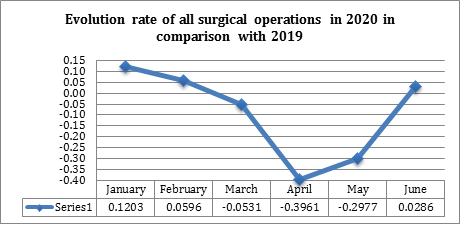
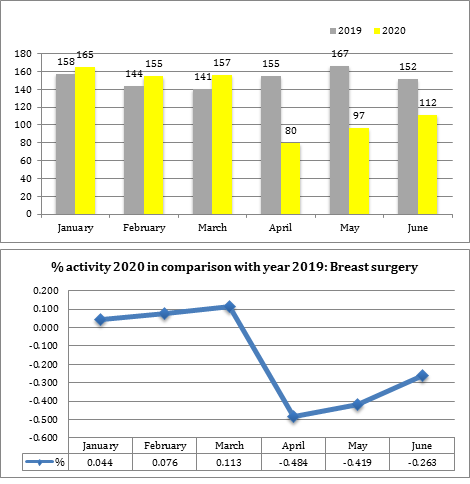
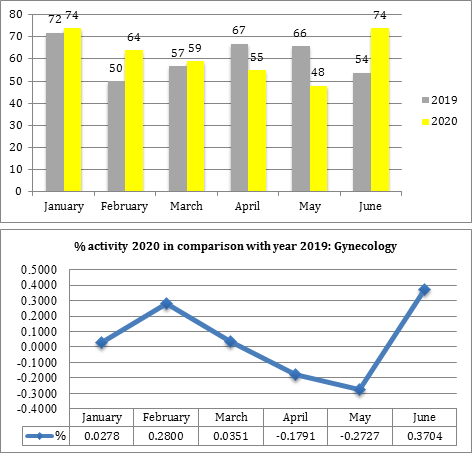
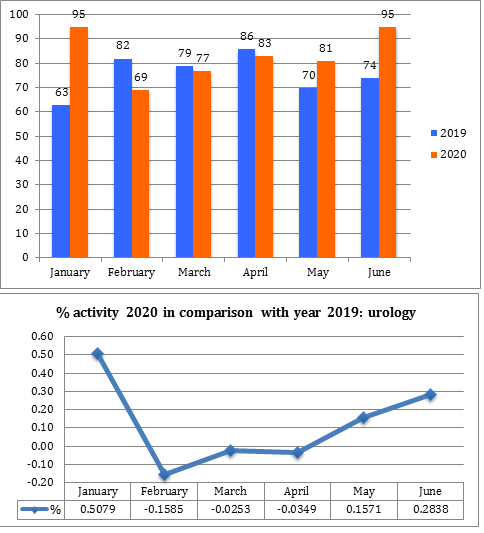
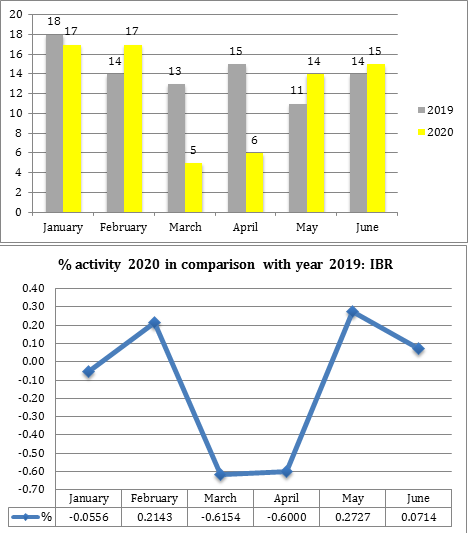
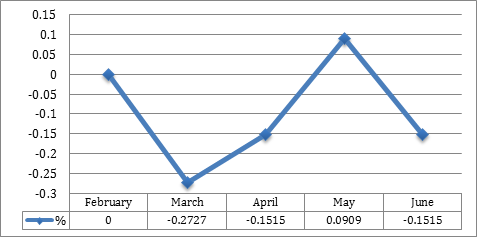

 Impact Factor: * 4.2
Impact Factor: * 4.2 Acceptance Rate: 72.62%
Acceptance Rate: 72.62%  Time to first decision: 10.4 days
Time to first decision: 10.4 days  Time from article received to acceptance: 2-3 weeks
Time from article received to acceptance: 2-3 weeks 